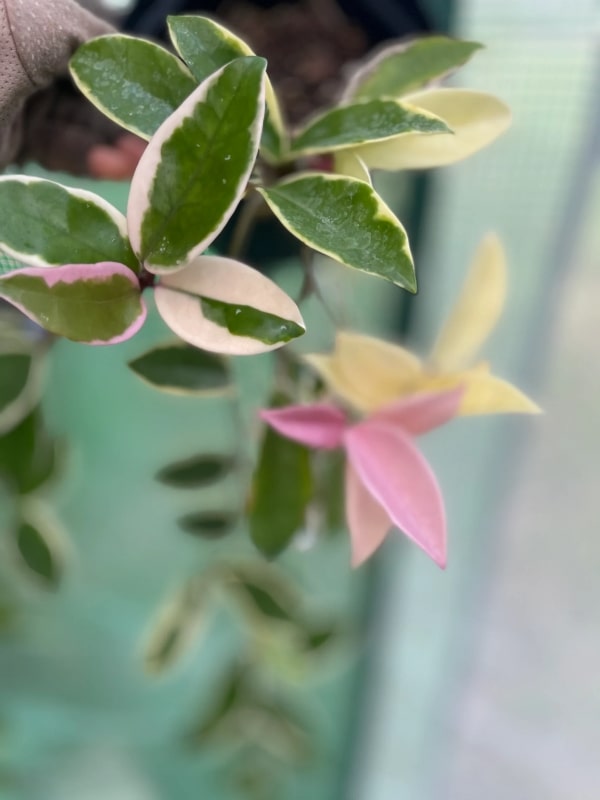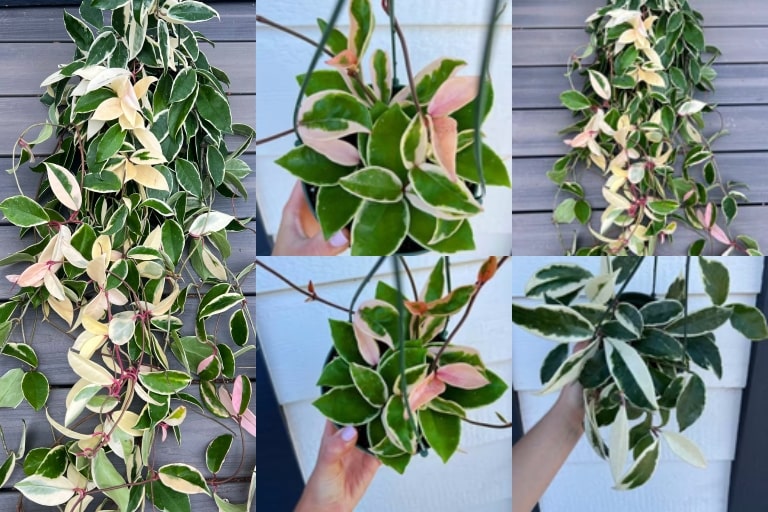The Hoya Tricolor, a Southeast Asian gem, is not just a colorful addition to indoor plant collections but is also an embodiment of nature’s versatility.
As we delve deeper into understanding its care requirements, we’ll uncover simple, actionable steps that even novice gardeners can master.
Additionally, we’ll touch upon the fascinating science behind its unique hues.
The Science Behind the Colors
Before diving into care tips, let’s appreciate the artistry of nature. The variegation seen in the Hoya Tricolor is a result of cells with different chlorophyll concentrations.
Chlorophyll is essential for photosynthesis, and its fluctuating presence gives us those vibrant green, white, and sometimes pink shades on the leaves.
Lighting: A Practical Approach

– The Sunlight Spectrum: Plants, including the Hoya Tricolor, interpret different sunlight angles during the day for their growth (known as phototropism).
Morning light is often gentle and rich in blue spectrum, promoting robust, healthy growth. Afternoon light, especially in direct form, can be harsh with intense UV rays.
– Positioning Tips: If you’re unsure about the light intensity in your space, try the shadow test. Place your hand between the light source and the plant around noon.
A sharp, defined shadow indicates bright light, while a faint shadow suggests low light. Adjust your Hoya’s position accordingly.
Watering: Embracing Nature’s Cycle
Water plays a pivotal role in photosynthesis, a process where plants convert light into energy. But how much is just right?
– The Saucer Trick: After watering, let the pot sit in a saucer. Return after 30 minutes and discard any remaining water. This ensures the plant isn’t sitting in excess moisture, reducing root rot risk.
– Signs of Thirst: Apart from the soil’s dryness, if the leaves of your Hoya Tricolor appear slightly wrinkled or less turgid, it’s hinting at its thirst.
Soil Science: More Than Just Dirt
The right soil doesn’t just anchor the plant—it’s a micro-ecosystem teeming with life. Beneficial microbes in the soil aid nutrient absorption and even protect roots from harmful pathogens.
– DIY Soil Mix: To achieve a well-draining mix, combine 2 parts potting soil, 1 part perlite, and 1 part orchid bark. This mix ensures adequate aeration, essential for root health.
Tackling Humidity: The Why and How
Higher humidity levels facilitate efficient photosynthesis and transpiration in plants. For the Hoya Tricolor, this means:
– Humidity on a Budget: Instead of investing in a humidifier, place water-filled jars or bowls around your plant. As the water evaporates, it raises surrounding humidity levels.
Another method is to group plants together; their collective transpiration can boost local humidity.
Feeding Fundamentals: Understanding Plant Nutrition
Just as we need a balanced diet, plants require a range of macro and micronutrients.
Most commercial fertilizers will offer a mix of nitrogen (N), phosphorous (P), and potassium (K), crucial for leaf, root, and flower development, respectively.
– Feeding Frequency: During active growth, feed once a month. However, in dormant periods, usually winter, reduce feeding to once every 2-3 months or skip altogether.
Common Concerns Decoded

Understanding the underlying causes of common issues can empower plant enthusiasts to respond promptly:
- Yellow Leaves: Often indicative of root rot, a byproduct of overwatering. In these conditions, fungi find the perfect environment to thrive, leading to root decay. When roots can’t absorb nutrients, leaves turn yellow.
- Leggy Growth: Known as etiolation, this phenomenon occurs when the plant is in low light. It stretches, trying to find a brighter spot, conserving energy by reducing leaf density in the process.
- Lack of Flowers: Flowers are a plant’s investment into the future, but they need energy. Without sufficient light or nutrients, the plant might delay or avoid flowering, focusing on its immediate survival instead.
- Brown, Crispy Leaf Edges: This can signify a lack of humidity or underwatering. Especially in drier environments, plant leaves can lose moisture rapidly, leading to these symptoms.
- Sticky Residue on Leaves: Sometimes, this is a natural excretion, but other times it’s a telltale sign of a pest infestation, specifically aphids. They release a sticky substance known as honeydew.
- Spotted Leaves: Different from uniform yellowing, random spots can hint at fungal infections, pest damage, or occasionally sunburn, if the plant was suddenly exposed to direct sunlight after being in a dim environment.
Conclusion
Hoya Tricolor’s allure goes beyond its striking colors. It’s a testament to the marvels of nature and plant physiology.
By aligning our care routines with the plant’s natural tendencies and understanding the science behind its needs, we pave the way for a thriving, vibrant Hoya. Happy gardening!